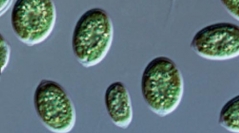

 Cryptogamie, Algologie
39 (2) - Pages 199-213
Cryptogamie, Algologie
39 (2) - Pages 199-213The algae which cause snow blooming remain poorly studied in the northern regions of the Eastern Europe. However, the process is widely observed, especially, in the mountain regions. The growth of cryophilic algae has a strong fascilitating effect on melting of the glaciers, thus, the comprehensive study of snow algae species would help to foresee and model interrelated processes of climate change in the ecosystem. The red snow blooming in the Subpolar Urals was investigated. The ecological characteristics of habitats where blooming occurred, as well as, chemical parameters of the meltwater were studied. The snow contained important elements for algal development, including N, P, Ca, Mg and other biogenic compounds. The density of algal cells in samples reached 0.33 × 104 cells per ml–1. A Chloromonas reticulata strain isolated from the red snow with massive development of biflagellate algae was studied in detail. The algal strain is stored in a collection of living algae in Institute of Biology Komi Scientific Center (SYKOA Ch-054-11). Based on analysis of ITS2 sequences, morphological and ultrastructural characteristics, the studied biflagellate strain has been placed to Chloromonas clade, Reticulata group with a high bootstrap support. The set of ultrastructural characters detected in isolated strain matched with that of previously described for other Chloromonas reticulata strains. Minor morphological deviations that were observed in Chloromonas reticulata strain from SYKOA Ch-054-11 in comparison with the strains SAG 29.83, SAG 32.86 and SAG 26.90 could be attributed to a latitudinal gradient differences and ecological conditions.